Humans have been sending spacecraft to other planets, as well as asteroid and comets, for decades. But rarely have any of these ventured into the outer reaches of our Solar System. In fact, the last time a probe reached beyond the orbit of Saturn to explore the worlds of Neptune, Uranus, Pluto and beyond was with the Voyager 2 mission, which concluded back in 1989.
But with the New Horizons mission, humanity is once again peering into the outer Solar System and learning much about its planets, dwarf planets, planetoids, moons and assorted objects. And as of July 14th, 2015, it made its historic rendezvous with Pluto, a world that has continued to surprise and mystify astronomers since it was first discovered.
Background:
In 1980, after Voyager 1‘s flyby of Saturn, NASA scientists began to consider the possibility of using Saturn to slingshot the probe towards Pluto to conduct a flyby by 1986. This would not be the case, as NASA decided instead to conduct a flyby of Saturn’s moon of Titan – which they considered to be a more scientific objective – thus making a slingshot towards Pluto impossible.
Because no mission to Pluto was planned by any space agency at the time, it would be years before any missions to Pluto could be contemplated. However, after Voyager 2′s flyby of Neptune and Triton in 1989, scientists once again began contemplating a mission that would take a spacecraft to Pluto for the sake of studying the Kuiper Belt and Kuiper Belt Objects (KBOs).
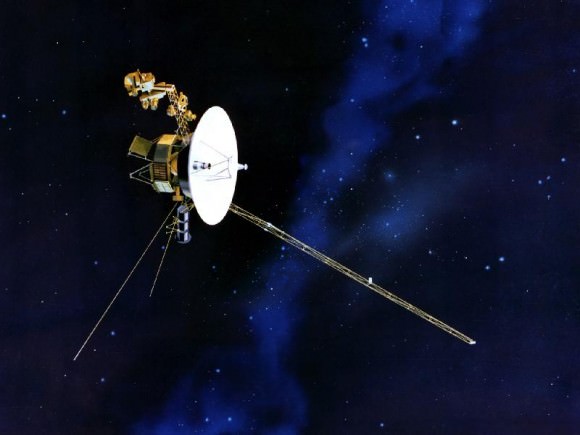
In May 1989, a group of scientists, including Alan Stern and Fran Bagenal, formed an alliance called the “Pluto Underground”. Committed to the idea of mounting an exploratory mission to Pluto and the Kuiper Belt, this group began lobbying NASA and the US government to make it this plan a reality. Combined with pressure from the scientific community at large, NASA began looking into mission concepts by 1990.
During the course of the late 1990s, a number of Trans-Neptunian Objects (TNOs) were discovered, confirming the existence of the Kuiper Belt and spurring interest in a mission to the region. This led NASA to instruct the JPL to re-purpose the mission as a Pluto and KBO flyby. However, the mission was scrapped by 2000, owing to budget constraints.
Backlash over the cancellation led NASA’s Science Mission Directorate to create the New Frontiers program which began accepting mission proposals. Stamatios “Tom” Krimigis, head of the Applied Physics Laboratory’s (APL) space division, came together with Alan Stern to form the New Horizons team. Their proposal was selected from a number of submissions, and officially selected for funding by the New Frontiers program in Nov. 2001.
Despite additional squabbles over funding with the Bush administration, renewed pressure from the scientific community allowed the New Horizons team managed to secure their funding by the summer of 2002. With a commitment of $650 million for the next fourteen years, Stern’s team was finally able to start building the spacecraft and its instruments.
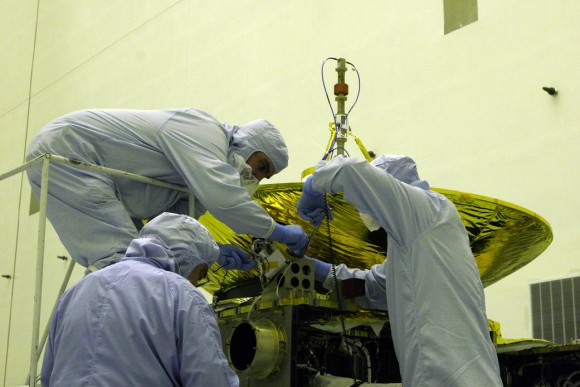
Mission Profile:
New Horizons was planned as a voyage to the only unexplored planet in the Solar System, and was originally slated for launch in January 2006 and arrival at Pluto in 2015. Alan Stern was selected as the mission’s principal investigator, and construction of the spacecraft was handled primarily by the Southwest Research Institute (SwRI) and the Johns Hopkins Applied Physics Laboratory, with various contractor facilities involved in the navigation of the spacecraft.
Meanwhile, the US Naval Observatory (USNO) Flagstaff Station – in conjunction with NASA and JPL – was responsible for performing navigational position data and related celestial frames. Coincidentally, the UNSO Flagstaff station was where the photographic plates that led to the discovery of Pluto’s moon Charon came from.
In addition to its compliment of scientific instruments (listed below), there are several cultural artifacts traveling aboard the spacecraft. These include a collection of 434,738 names stored on a compact disc, a piece of Scaled Composites’s SpaceShipOne, and a flag of the USA, along with other mementos. In addition, about 30 g (1 oz) of Clyde Tombaugh’s ashes are aboard the spacecraft, to commemorate his discovery of Pluto in 1930.
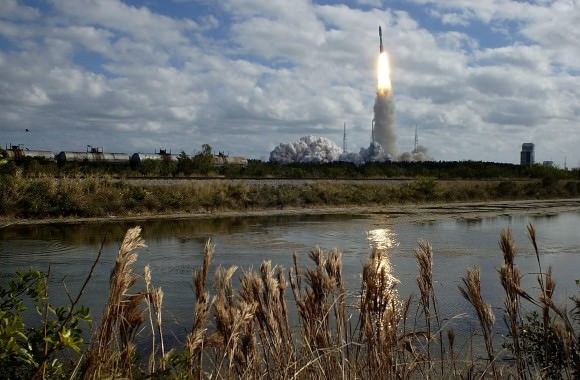
Instrumentation:
The New Horizons science payload consists of seven instruments. They are (in alphabetically order):
- Alice: An ultraviolet imaging spectrometer responsible for analyzing composition and structure of Pluto’s atmosphere and looks for atmospheres around Charon and Kuiper Belt Objects (KBOs).
- LORRI: (Long Range Reconnaissance Imager) a telescopic camera that obtains encounter data at long distances, maps Pluto’s farside and provides high resolution geologic data.
- PEPSSI: (Pluto Energetic Particle Spectrometer Science Investigation) an energetic particle spectrometer which measures the composition and density of plasma (ions) escaping from Pluto’s atmosphere.
- Ralph: A visible and infrared imager/spectrometer that provides color, composition and thermal maps.
- REX: (Radio Science EXperiment) a device that measures atmospheric composition and temperature; passive radiometer.
- SDC: (Student Dust Counter) built and operated by students, this instrument measures the space dust peppering New Horizons during its voyage across the solar system.
- SWAP: (Solar Wind Around Pluto) a solar wind and plasma spectrometer that measures atmospheric “escape rate” and observes Pluto’s interaction with solar wind.
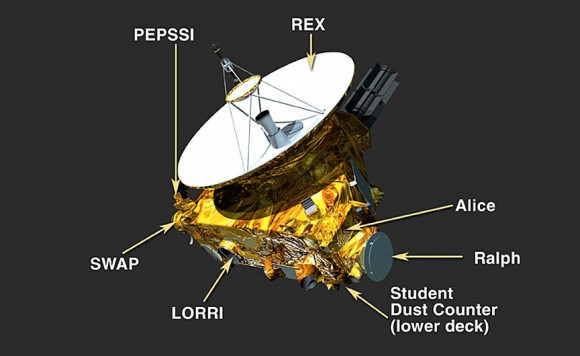
Launch:
Due to a series of weather-related delays, the New Horizons mission launched on January 19th, 2006, two days later than originally scheduled. The spacecraft took off from Cape Canaveral Air Force Station, Florida, at 15:00 EST (19:00 UTC) atop an Atlas V 551 rocket. This was the first launch of this particular rocket configuration, which has a third stage added to increase the heliocentric (escape) speed.
The spacecraft left Earth faster than any spacecraft to date, achieving a launch velocity of 16.5 km/s. It took only nine hours to reach the Moon’s orbit, passing lunar orbit before midnight (EST) on the same day it was launched. It has not, however, broken Voyager 1‘s record – which is currently traveling at 17.145 km/s (61,720 km/h, 38,350 mph) relative to the Sun – for being the fastest spacecraft to leave the Solar System.
Inner Solar System:
Between January and March, 2006, mission controllers guided the probe through a series of trajectory-correction maneuvers (TCMs). During the week of February 20th, 2006, controllers conducted in-flight tests on three of the major on board science instruments. On April 7th, the spacecraft passed the orbit of Mars, moving at roughly 21 km/s (76,000 km/h; 47,000 mph) away from the Sun.
At this point in its journey, the spacecraft had reached a distance of 243 million kilometers from the Sun, and approximately 93.4 million km from Earth. On June 13th, 2006, the New Horizons spacecraft passed the tiny asteroid 132524 APL at a distance of 101,867 km (63,297 mi) when it was closest.
Using the Ralph instrument, New Horizons was able to capture images of the asteroid, estimating to be 2.5 km (1.6 mi) in diameter. The spacecraft also successfully tracked the asteroid from June 10th-12th, 2006, allowing the mission team to test the spacecraft’s ability to track rapidly moving objects.

From September 21st-24th, New Horizons managed to capture its first images of Pluto while testing the LORRI instruments. These images, which were taken from a distance of approximately 4,200,000,000 km (2.6×109 mi) or 28.07 AU and released on November 28th, confirmed the spacecraft’s ability to track distant targets.
Outer Solar System:
On September 4th, 2006, New Horizons took its first pictures of Jupiter at a distance of 291 million kilometers (181 million miles). The following January, it conducted more detailed surveys of the system, capturing an infrared image of the moon Callisto, and several black and white images of Jupiter itself.
By February 28th, 2007, at 23:17 EST (03:17, UTC) New Horizons made its closest approach to Europa, at a distance of 2,964,860 km (1,842,278 mi). At 01:53:40 EST (05:43:40 UTC), the spacecraft made its flyby of Jupiter, at a distance of 2.3 million km (1.4 million mi) and received a gravity assist.
The Jupiter flyby increased New Horizons‘ speed by 4 km/s (14,000 km/h; 9,000 mph), accelerating the probe to a velocity of 23 km/s (83,000 km/h; 51,000 mph) relative to the Sun and shortening its voyage to Pluto by three years.
The encounter with Jupiter not only provided NASA with the opportunity to photograph the planet using the latest equipment, it also served as a dress rehearsal for the spacecraft’s encounter with Pluto. As well as testing the imaging instruments, it also allowed the mission team to test the communications link and the spacecraft’s memory buffer.
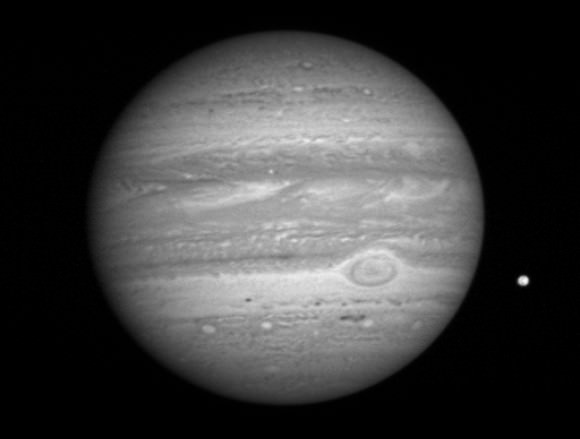
One of the main goals during the Jupiter encounter was observing its atmospheric conditions and analyzing the structure and composition of its clouds. Heat-induced lightning strikes in the polar regions and evidence of violent storm activity were both observed. In addition, the Little Red Spot, was imaged from up close for the first time. The New Horizons spacecraft also took detailed images of Jupiter’s faint ring system. Traveling through Jupiter’s magnetosphere, the spacecraft also managed to collect valuable particle readings.
The flyby of the Jovian systems also gave scientists the opportunity to examine the structure and motion of Io’s famous lava plumes. New Horizons measured the plumes coming from the Tvashtar volcano, which reached an altitude of up to 330 km from the surface, while infrared signatures confirmed the presence of 36 more volcanoes on the moon.
Callisto’s surface was also analyzed with LEISA, revealing how lighting and viewing conditions affect infrared spectrum readings of its surface water ice. Data gathered on minor moons such as Amalthea also allowed NASA scientists to refine their orbit solutions.
After passing Jupiter, New Horizons spent most of its journey towards Pluto in hibernation mode. During this time, New Horizons crossed the orbit of Saturn (June 8, 2008) and Uranus on (March 18, 2011). In June 2014, the spacecraft emerged from hibernation and the team began conducting instrument calibrations and a course correction,. By August 24th, 2014, it crossed Neptune’s orbit on its way to Pluto.
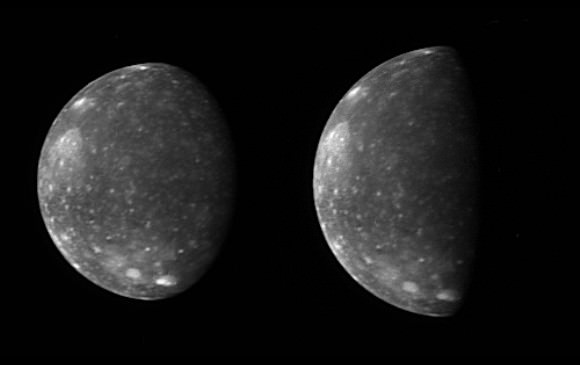
Rendezvous with Pluto:
Distant-encounter operations at Pluto began on January 4th, 2015. Between January 25th to 31st, the approaching probe took several images of Pluto, which were released by NASA on February 12th. These photos, which were taken at a distance of more than 203,000,000 km (126,000,000 mi) showed Pluto and its largest moon, Charon.
Investigators compiled a series of images of the moons Nix and Hydra taken from January 27th through February 8th, 2015, beginning at a range of 201,000,000 km (125,000,000 mi), while Kerberos and Styx were captured by photos taken on April 25.
On July 4th, 2015, NASA lost contact with New Horizons after it experienced a software anomaly and went into safe mode. On the following day, NASA announced that they had determined it to be the result of a timing flaw in a command sequence. By July 6th, the glitch had been fixed and the probe had exited safe mode and began making its approach.
The New Horizons spacecraft made its closest approach to Pluto at 07:49:57 EDT (11:49:57 UTC) on July 14th, 2015, and then Charon at 08:03:50 EDT (12:03:50 UTC). Telemetries confirming a successful flyby and a healthy spacecraft reached Earth on 20:52:37 EDT (00:52:37 UTC).
During the flyby, the probe captured the clearest pictures of Pluto to date, and full analyses of the data obtained is expected to take years to process. The spacecraft is currently traveling at a speed of 14.52 km/s (9.02 mi/s) relative to the Sun and at 13.77 km/s (8.56 mi/s) relative to Pluto.
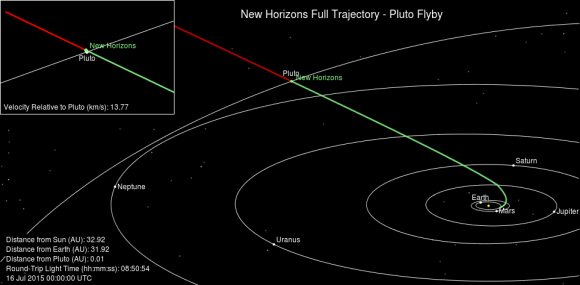
Future Objectives:
With its flyby of Pluto now complete, the New Horizons probe is now on its way towards the Kuiper Belt. The goal here is to study one or two other Kuiper Belt Objects, provided suitable KBOs are close to New Horizons‘ flight path.
Three objects have since been selected as potential targets, which were provisionally designated PT1 (“potential target 1”), PT2 and PT3 by the New Horizons team. These have since been re-designated as 2014 MU69 (PT1), 2014 OS393 (PT2), and 2014 PN70 (PT3).
All of these objects have an estimated diameter of 30–55 km, are too small to be seen by ground telescopes, and are 43–44 AU from the Sun, which would put the encounters in the 2018–2019 period. All are members of the “cold” (low-inclination, low-eccentricity) classical Kuiper Belt, and thus very different from Pluto.
Even though it was launched far faster than any outward probe before it, New Horizons will never overtake either Voyager 1 or Voyager 2 as the most distant human-made object from Earth. But then again, it doesn’t need to, given that what it was sent out to study all lies closer to home.
What’s more, the probe has provided astronomers with extensive and updated data on many of planets and moons in our Solar System – not the least of which are the Jovian and Plutonian systems. And last, but certainly not least, New Horizons is the first spacecraft to have it made it out to such a distance since the Voyager program.
And so we say so long and good luck to New Horizons, not to mention thanks for providing us with the best images of Pluto anyone has ever seen! We can only hope she fares well as she makes its way into the Kuiper Belt and advances our knowledge of the outer Solar System even farther.
We have many interesting articles about the New Horizons spacecraft and Pluto here on Universe Today. For example, here are some Interesting Facts About Pluto, How Long Does it Take to Get to Pluto, Why Pluto is No Longer Considered a Planet, and Is There Life on Pluto?
For more information on the Kuiper Belt, check out What is The Kuiper Belt? and NASA’s Solar System Exploration entry on the Kuiper Belt and Oort Cloud.
Astronomy Cast also has some fascinating episodes on Pluto, including On Pluto’s Doorstep – Live Hangout with New Horizons Team
And be sure to check out the New Horizons mission homepage at NASA.

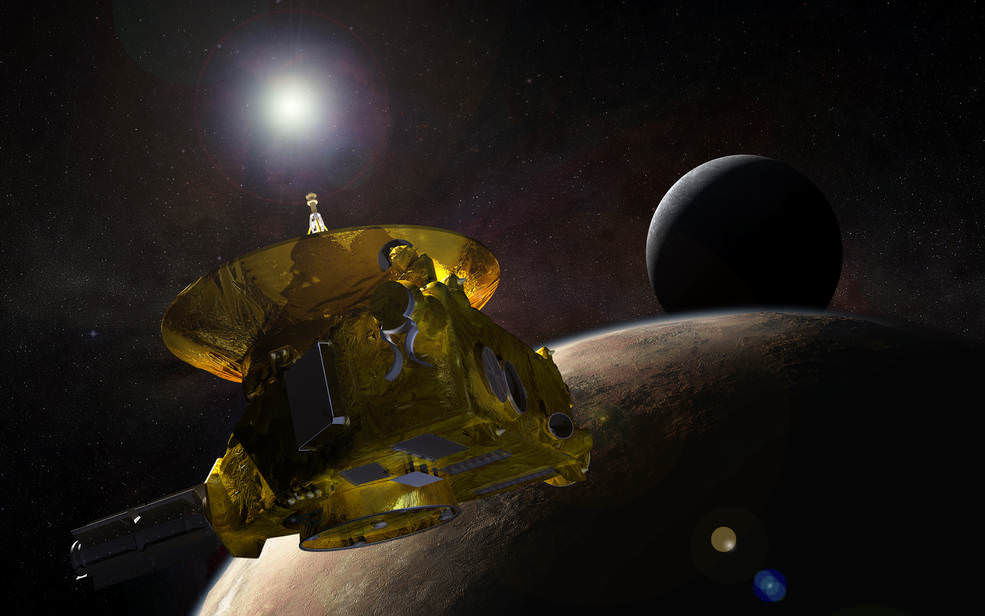
Nice big review. One aspect I’d suggest more people note in these is that the Kuiper Belt is inside the Heliosphere whereas the Oort cloud is beyond – I think Sedna crosses back and forth. Presence inside the Heliosphere will tend to diminish the affect of interstellar winds and that kind of spaceweathering.
“LORRI: (Long Range Reconnaissance Imager) a telescopic camera that obtains encounter data at long distances, maps Pluto’s farside…”
This raises several questions, for example:
Why not use LORRI to map both sides? We’ve seen LORRI images of nearly the entire surface, and isn’t it the highest resolution camera?
What is Pluto’s farside? The side away from Charon?
Who were the first humans to see the dark side of the Moon? (the dark side of Earth’s Moon).
New Horizons will continue to provide valuable science even after the second KBO flyby, for as long as it’s contactable. All the instruments except the cameras can explore the environment of the Kuiper belt by measuring dust, radiation, and solar wind.
Re lapsedpacifist’s question.
The “smart” answer to who saw the far side of the Moon first is;-
A couple of Jodrell Bank astronomers, followed by the Daily Express readership and then the Russians. An early Russian spacecraft went around the Moon and beamed the pictures back to Jodrell Bank. JB had to use a Daily Express type of Fax machine to see the image and the reast as they is history.
Roseland Observatory.
Good answer except that wasn’t the question.
I asked who first saw the dark side of the Moon.
You mean directly, not through photography? Apollo 8 crew, Borman, Lovell, and Anders.
Ok, it was a trick question. I think the first to see it were Homo habilis (or Adam & Eve if you prefer the Biblical narrative). They would have seen the dark side by earthshine the first time they gazed at the crescent Moon… the dark side moves as the Moon rotates.
I only asked to poke fun at the term “Pluto’s farside” – that moves too unless you’re standing on Charon!
If the question was lunar “far side” instead of “dark side” I would have said Borman, Lovell, and Anders too. I never thought of Jodrell Bank – I thought I’d ruled out the Russian Luna 3 probe by saying “humans” but I guess I hadn’t. 🙂
Yes point taken, Borman, Lovell and Anders in Apollo 8, would be my standard answer. The first Homo Sapiens I would prefer. A lot of people think the far side of the Moon is always dark! An interesting discussion was had by all.
Why does the illustration show “Artist’s impression of the New Horizons spacecraft in orbit around Pluto”, given that New Horizons has never orbited Pluto, and never will?
That caption originally read “Artist’s impression of the New Horizons spacecraft in a galactic orbit, when it was somewhere around Pluto.”
But it was shortened for editorial purposes and now it’s easy to misinterpret. 😛
KEN IS RIGHT, IT IS 8
http://i2.photobucket.com/albums/y33/HeadAroundU/KEN%20IS%20RIGHT%20IT%20IS%208.jpg